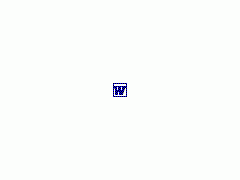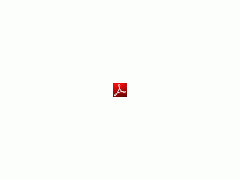COMMISSION IMPLEMENTING REGULATION (EU) 2017/1007
of 15 June 2017
concerning the authorisation of a preparation of lecithins as feed additive for all animal species
(Text with EEA relevance)
THE EUROPEAN COMMISSION,
Having regard to the Treaty on the Functioning of the European Union,
Having regard to Regulation (EC) No 1831/2003 of the European Parliament and of the Council of 22 September 2003 on additives for use in animal nutrition (1), and in particular Article 9(2) thereof,
Whereas:
| (1) | Regulation (EC) No 1831/2003 provides for the authorisation of additives for use in animal nutrition and for the grounds and procedures for granting such authorisation. Article 10 of that Regulation provides for the re-evaluation of additives authorised pursuant to Council Directive 70/524/EEC (2). |
| (2) | Lecithins were authorised without a time limit in accordance with Directive 70/524/EEC as feed additive for all animal species. That additive was subsequently entered in the Register of feed additives as an existing product, in accordance with Article 10(1)(b) of Regulation (EC) No 1831/2003. |
| (3) | In accordance with Article 10(2) of Regulation (EC) No 1831/2003 an application was submitted for the re-evaluation of a preparation of lecithins as feed additive for all animal species. The applicant requested that additive to be classified in the additive category ‘technological additives’ and in the functional group ‘emulsifiers’. That application was accompanied by the particulars and documents required under Article 7(3) of Regulation (EC) No 1831/2003. |
| (4) | The European Food Safety Authority (‘the Authority’) concluded in its opinion of 13 July 2016 (3) that, under the proposed conditions of use, the preparation of lecithins does not have an adverse effect on animal health, human health or the environment. The Authority also concluded that preparation is considered efficacious for use in feed as emulsifiers. The Authority does not consider that there is a need for specific requirements of post-market monitoring. It also verified the report on the methods of analysis of the feed additives in feed submitted by the Reference Laboratory set up by Regulation (EC) No 1831/2003. |
| (5) | The assessment of lecithins shows that the conditions for authorisation, as provided for in Article 5 of Regulation (EC) No 1831/2003, are satisfied. Accordingly, the use of that preparation should be authorised as specified in the Annex to this Regulation. |
| (6) | Since safety reasons do not require the immediate application of the modifications to the conditions of authorisation, it is appropriate to allow a transitional period for interested parties to prepare themselves to meet the new requirements resulting from the authorisation. |
| (7) | The measures provided for in this Regulation are in accordance with the opinion of the Standing Committee on Plants, Animals, Food and Feed, |
HAS ADOPTED THIS REGULATION:
Article 1
Authorisation
The additive specified in the Annex belonging to the additive category ‘technological additives’ and to the functional group ‘emulsifiers’, is authorised as additive in animal nutrition, subject to the conditions laid down in that Annex.
Article 2
Transitional measures
1. The additive specified in the Annex and premixtures containing those additive which are produced and labelled before 6 January 2018 in accordance with the rules applicable before 6 July 2017 may continue to be placed on the market and used until the existing stocks are exhausted.
2. Compound feed and feed materials containing the additive as specified in the Annex which are produced and labelled before 6 July 2018 in accordance with the rules applicable before 6 July 2017 may continue to be placed on the market and used until the existing stocks are exhausted if they are intended for food-producing animals.
3. Compound feed and feed materials containing the additive as specified in the Annex which are produced and labelled before 6 July 2019 in accordance with the rules applicable before 6 July 2017 may continue to be placed on the market and used until the existing stocks are exhausted if they are intended for non-food-producing animals.
Article 3
Entry into force
This Regulation shall enter into force on the twentieth day following that of its publication in the Official Journal of the European Union.
This Regulation shall be binding in its entirety and directly applicable in all Member States.
Done at Brussels, 15 June 2017.
For the Commission
The President
Jean-Claude JUNCKER
(1) OJ L 268, 18.10.2003, p. 29.
(2) Council Directive 70/524/EEC of 23 November 1970 concerning additives in feedingstuffs (OJ L 270, 14.12.1970, p. 1).
(3) EFSA Journal 2016;14(8):4560.
ANNEX
| Identification number of the additive | Name of the holder of authorisation | Additive | Composition, chemical formula, description, analytical method | Species or category of animal | Maximum age | Minimum content | Maximum content | Other provisions | End of period of authorisation | ||||||
| mg of lecithins/kg of complete feedingstuff with a moisture content of 12 % | |||||||||||||||
| Category of technological additives. Functional group: emulsifiers | |||||||||||||||
| 1c322 | — | Lecithins | Additive composition Preparation of lecithins having a minimum of:
Moisture ≤ 1 % Characterisation of the active substance Lecithins (CAS No 8002-43-5) extracted from soybeans Analytical method (1) For the characterisation of feed additive: Commission Regulation (EU) No 231/2012 (2) and the corresponding tests in the FAO JECFA monograph ‘Lecithin’ (3) (4) | All animal species | — | — | — | Use level in complete feed: 100-1 500 mg of additive/kg complete feed | 6 July 2027 | ||||||
(1) Details of the analytical methods are available at the following address of the Reference Laboratory: https://ec.europa.eu/jrc/en/eurl/feed-additives/evaluation-reports.
(2) Commission Regulation (EU) No 231/2012 of 9 March 2012 laying down specifications for food additives listed in Annexes II and III to Regulation (EC) No 1333/2008 of the European Parliament and of the Council (OJ L 83, 22.3.2012, p. 1).
(3) FAO JECFA Combined Compendium of Food Additive Specifications, ‘Lecithin’, Monograph No. 4 (2007), http://www.fao.org/food/food-safety-quality/scientific-advice/jecfa/jecfa-additives/detail/en/c/260/.
(4) FAO JECFA Combined Compendium for Food Additive Specifications — Analytical methods, test procedures and laboratory solutions used by and referenced in the food additive specifications, Vol. 4, http://www.fao.org/docrep/009/a0691e/a0691e00.htm.
